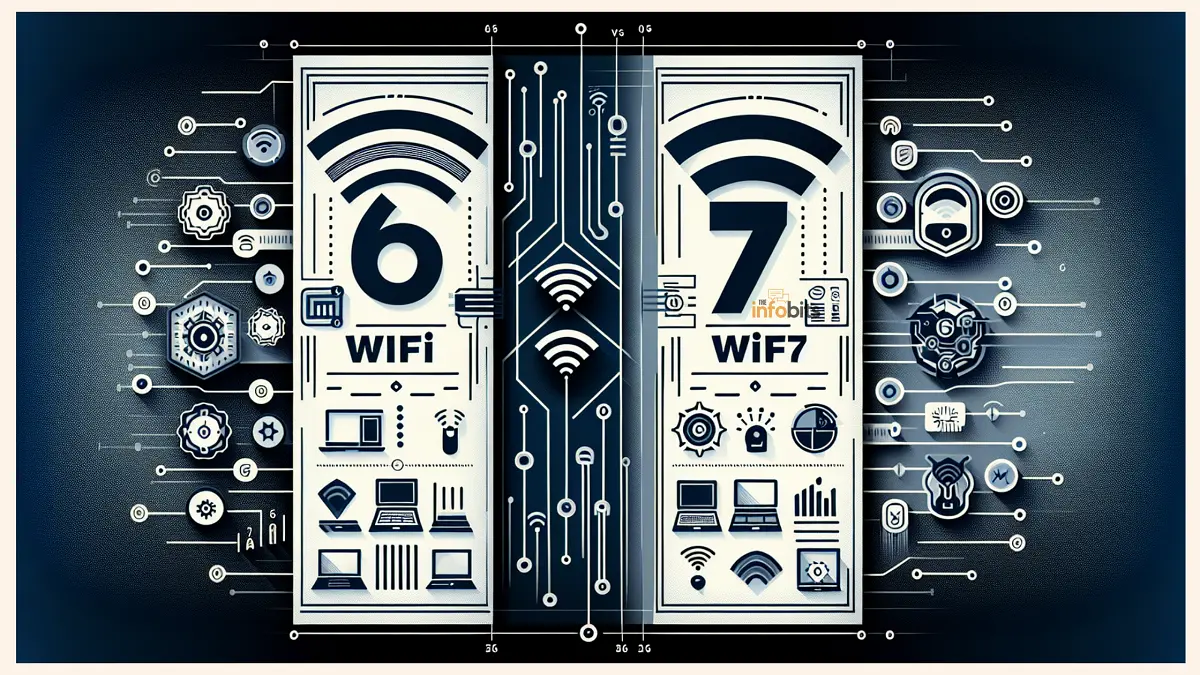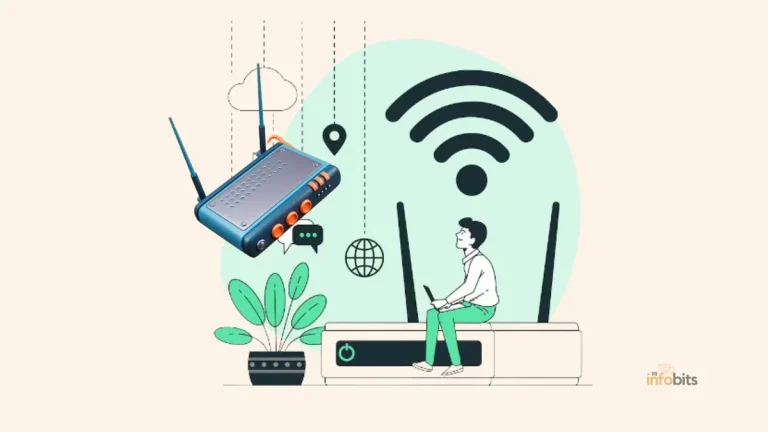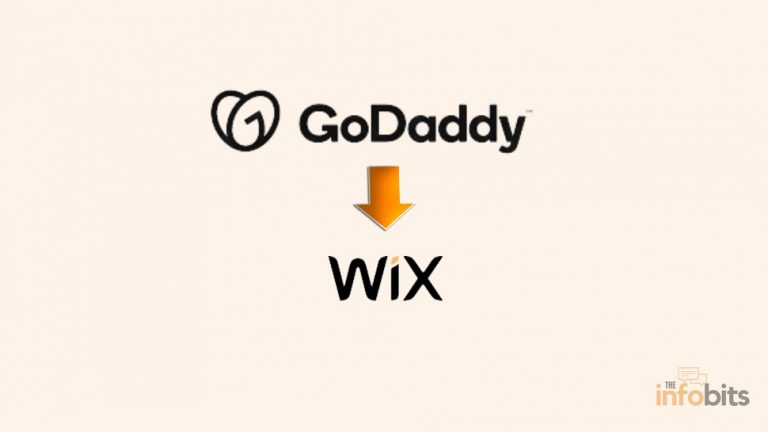WiFi 6 Vs WiFi 7: What’s the Real Difference?
With the rapid evolution of technology, WiFi standards continue to advance, promising faster speeds, better performance, and enhanced capabilities.
As WiFi 6 becomes more widely adopted, the next generation, WiFi 7, is on the horizon. This article explores the key differences between WiFi 6 and WiFi 7, focusing on aspects such as speed and performance, technological advancements, power efficiency, security protocols, and cost and availability.
Understanding WiFi 6 Vs WiFi 7 differences will help consumers and industry professionals make informed decisions about which technology best suits their needs.
Comparison of Speed and Performance
WiFi 6 brought a significant leap in speed and performance compared to its predecessors. It was designed to handle the increasing demand for connectivity by offering faster data rates and more reliable connections, even in crowded environments.
As we anticipate the introduction of WiFi 7, expectations are high for even greater improvements in these areas.
Related: Best Long-Range WiFi Routers
Speed capabilities of WiFi 6
WiFi 6, also known as 802.11ax, offers theoretical speeds of up to 9.6 Gbps. This is a substantial increase over WiFi 5, which maxed out at around 3.5 Gbps.
The increased speed of WiFi 6 is achieved through advanced modulation techniques like 1024-QAM, which allows more data to be packed into the signal.
Additionally, WiFi 6 takes advantage of wider channel bandwidths, supporting up to 160 MHz compared to the 80 MHz ceiling of WiFi 5.
However, real-world speed improvements depend on various factors, including network congestion, the number of connected devices, and the capabilities of individual devices.
Despite this, WiFi 6 provides enhanced performance in high-density environments such as stadiums, airports, and office buildings.
Performance of WiFi 6 in various environments
WiFi 6 excels in environments where multiple devices are connected to a single network.
Its features, such as MU-MIMO (Multi-User, Multiple-Input, Multiple-Output) and OFDMA (Orthogonal Frequency Division Multiple Access), allow for efficient data distribution among devices, reducing latency and improving throughput.
In homes with smart devices, WiFi 6 can manage the simultaneous data requests from multiple gadgets, ensuring seamless streaming and gaming experiences.
Office spaces benefit from their ability to handle numerous connections without significant slowdowns, making them ideal for modern, connected workspaces.
Speed capabilities of WiFi 7
WiFi 7, expected to be designated as 802.11be, promises even greater speed increases, potentially reaching up to 30 Gbps.
This enhancement is achieved through advanced technologies like 4096-QAM and the use of wider channels, up to 320 MHz.
Such capabilities aim to cater to future demands for ultra-fast internet, especially for applications like virtual reality and 8K streaming.
WiFi 7 is also expected to introduce features like multi-link operation, which allows devices to connect to multiple bands simultaneously.
This will provide increased bandwidth and reduce latency, contributing to overall better performance in both home and enterprise settings.
Performance of WiFi 7 in various environments
WiFi 7 is designed to enhance performance in environments with high data throughput requirements.
Advanced features such as multi-link operation and enhanced MU-MIMO will allow for more efficient management of numerous concurrent connections.
This makes it suitable for environments like smart cities and IoT deployments where low latency and high capacity are crucial.
As more devices in households and offices demand concurrent high-speed connectivity, WiFi 7 will likely become the standard for ensuring optimal performance. It is designed to integrate seamlessly with emerging technologies, providing the backbone for a more connected world.
Related: The Latest Trends in Router Technology: What You Need to Know
Difference in Technology and Standards
The technological advancements between WiFi 6 and WiFi 7 are marked by significant improvements that aim to meet future connectivity needs.
Each standard builds upon the last, introducing new features and capabilities that set them apart.
Technological advancements in WiFi 6
WiFi 6 introduced several key technologies that enhance network efficiency and performance.
One of the most significant advancements is OFDMA, which allows multiple users with varying bandwidth needs to be served simultaneously, enhancing overall network efficiency.
Another notable feature is Target Wake Time (TWT), which benefits battery-operated devices by scheduling when they should wake up to receive data, thereby saving power.
These advancements make WiFi 6 particularly effective in environments with many connected devices, such as smart homes and office buildings.
WiFi 6 Standards
The WiFi 6 standard, ratified by the IEEE as 802.11ax, sets the foundation for enhanced connectivity.
It supports both 2.4 GHz and 5 GHz bands, providing flexibility and better coverage, especially in congested areas. The standard also mandates improved security features, including WPA3, which enhances protection against cyber threats.
WiFi 6 also emphasizes backward compatibility, ensuring that devices operating on previous WiFi generations can function within the same network, albeit without gaining the new standard’s full benefits.
This ensures a smooth transition for users upgrading to WiFi 6-enabled devices.
Technological advancements in WiFi 7
WiFi 7 is poised to introduce several groundbreaking technologies aimed at further improving data rates and reducing latency.
One of the anticipated features is Extremely High Throughput (EHT), which includes enhancements such as wider bandwidth channels and improved modulation schemes like 4096-QAM.
WiFi 7 will also likely build on multi-link operation, allowing devices to send and receive data across different frequency bands simultaneously.
This innovation aims to optimize network utilization and provide more reliable and consistent connections, which is crucial for applications requiring real-time data processing.
WiFi 7 Standards
The WiFi 7 standard, still under development by the IEEE, is expected to be known as 802.11be.
It aims to provide better experiences for emerging applications like augmented reality and three-dimensional holographic communications by offering higher throughput and lower latency.
While official specifications are yet to be finalized, WiFi 7’s key objectives include enhancing spectrum efficiency and expanding the use of the 6 GHz band.
This aligns with the growing demand for more bandwidth and the need to accommodate an increasing number of wireless devices.
Assessing Power Efficiency
Power efficiency is a critical consideration for wireless technologies, especially with the proliferation of battery-operated devices.
Both WiFi 6 and WiFi 7 incorporate strategies to extend battery life while maintaining connectivity performance.
How WiFi 6 manages power
WiFi 6 introduces Target Wake Time (TWT) as a powerful tool for managing power consumption.
With TWT, devices can negotiate when and how frequently they wake up to send or receive data, significantly reducing the power used during idle periods.
This feature is particularly beneficial for IoT devices and smartphones, which demand efficient power use to extend battery life.
By minimizing the time a device’s radio is active, WiFi 6 helps reduce energy consumption without compromising network availability.
How WiFi 7 manages power
WiFi 7 is expected to advance power efficiency initiatives introduced in previous generations.
While specific details are still emerging, it is anticipated that WiFi 7 will refine technologies like TWT to offer even greater energy savings.
Future enhancements might include more sophisticated power-saving protocols that dynamically adjust based on real-time network conditions and device needs.
These innovations are crucial for enabling longer battery life in wearable tech and other portable devices.
Security Measures: WiFi 6 vs WiFi 7
Security is a paramount concern in wireless networking as more devices connect to the internet and cyber threats evolve.
Both WiFi 6 and WiFi 7 are designed with advanced security measures to ensure safe and secure connections.
The security protocols in WiFi 6
WiFi 6 includes support for WPA3, the latest WiFi security protocol, which provides enhanced encryption strength and better protection against brute-force attacks.
WPA3 also features individualized data encryption, improving privacy on open networks.
WiFi 6 also includes measures to protect against attacks such as key reinstallation attacks (KRACK) and provides simpler security configuration processes for users.
These protocols aim to shore up defenses against a growing array of cyber threats targeting personal and enterprise networks.
The security protocols in WiFi 7
WiFi 7 will build upon the security framework established by WiFi 6, aiming to further enhance encryption methods and vulnerability protections.
While specifics about WiFi 7’s security protocols are still being determined, it is expected to incorporate cutting-edge technologies like post-quantum cryptography.
Enhancements in WiFi 7 may also focus on improving identity management and access control systems, providing more robust defenses against unauthorized network access.
These improvements will be crucial as the number of connected devices continues to grow and the risk of cyber threats increases correspondingly.
Cost and Availability
The transition from WiFi 6 to WiFi 7 involves considerations of cost and market availability. Consumers and businesses must weigh these factors when deciding whether to adopt new technologies as they become available.
Current market availability of WiFi 6
WiFi 6 is currently widely available, with most new routers and devices supporting the standard.
As it becomes the norm, prices for WiFi 6-enabled devices have become increasingly accessible, making it easier for consumers and businesses to upgrade their network infrastructure.
The widespread adoption of WiFi 6 has also been driven by the support from leading tech companies and a robust ecosystem of compatible devices.
Today, most flagship smartphones, laptops, and network equipment are equipped to take full advantage of WiFi 6 features.
Cost of WiFi 6 and its devices
The cost of WiFi 6 devices varies based on their capabilities and features.
Entry-level routers are reasonably priced, though high-end models with extended functionalities can be significantly more expensive. However, the overall cost has been decreasing as the technology matures and demand increases.
Businesses looking to upgrade their network infrastructure will find that the investment in WiFi 6 can improve productivity and connectivity reliability, often justifying the initial expenditure.
Additionally, the improved power efficiency and performance of WiFi 6 devices make them a cost-effective choice in the long run.
Expected market availability of WiFi 7
WiFi 7 is still in the development phase, and its widespread commercial availability is projected for the coming years.
However, initial trials and early releases are expected to begin soon, primarily targeting enterprise and tech-savvy early adopters.
The rollout of WiFi 7 will likely follow a similar pattern to previous generations, with gradual adoption as more devices and infrastructure support the new standard.
As this occurs, we can expect to see increased availability and decreasing costs over time.
Estimated cost of WiFi 7 and its devices
The initial cost of WiFi 7-enabled devices is expected to be higher than that of WiFi 6, reflecting the new technology’s advanced capabilities and early-stage adoption.
Premium pricing is anticipated for cutting-edge devices, though costs will likely decrease as the technology becomes more mainstream.
For consumers and businesses, investing in WiFi 7 will depend on their need for the enhanced performance and capabilities it offers.
As with WiFi 6, the long-term benefits of improved speed, efficiency, and security may justify the initial expense for those requiring top-tier networking solutions.
In conclusion, the evolution from WiFi 6 to WiFi 7 represents a significant leap forward in wireless networking technology, promising faster speeds, improved performance, and enhanced security.
Each generation builds upon its predecessor, offering new features that address the growing demands of the digital age. While WiFi 6 is already widely adopted and offers substantial benefits, WiFi 7 is poised to usher in a new era of connectivity.
As consumers and businesses evaluate these technologies, considerations such as cost, availability, and specific use-case requirements will determine the most suitable option for their needs.
Embracing these advancements will ensure that users stay at the forefront of wireless innovation, equipped to handle the ever-increasing demands of a connected world.
Please share this article with your friends and relatives if you find it useful.
We also ask that you bookmark this page for future reference, as we are constantly updating our articles with new information.
Sign up for our free newsletter as well to receive fresh information immediately in your inbox and keep technically up to date.







